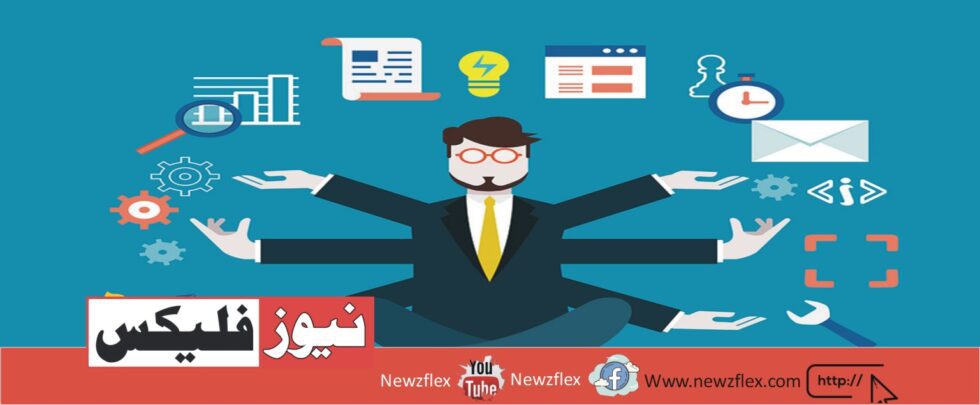
You’re facing resource constraints in your project scope. How can you maintain quality without compromising?
When project budgets are tight and deadlines close in, it can feel like you have to sacrifice quality to survive. But does it have to be this way?
Let’s challenge the conventional thinking around this. Quality is not about endless resources but smart choices and sharp focus. Here’s how to maintain excellence, even when resources are stretched thin.
1. Redefine What Quality Means
Most teams think quality means perfection in every detail. This mindset is a trap. Real quality is delivering what the user needs, not unnecessary extras. Start by asking: What does the end-user truly care about? Focus only on those features or aspects that create meaningful impact.
Projects often waste time and energy on things no one even notices. If it doesn’t serve the user, it’s not essential.
2. Prioritize Ruthlessly
A good project isn’t about doing everything. It’s about doing the right things. List out your tasks and rank them by their impact on the outcome. Let go of anything that doesn’t drive value.
This step takes courage. Many managers fear cutting scope because they assume it means doing “less.” But in reality, you’re just clearing the clutter to focus on what matters.
Ask yourself: What can we simplify without lowering the quality that matters most?
3. Tap into Creative Workarounds
Constraints force creativity. Instead of looking at limited resources as a burden, use them as an opportunity to innovate. You don’t always need expensive tools or more people. Leverage what’s already available — existing templates, low-cost tools, and automation options.
Example: Many startups use no-code tools or free software alternatives to build prototypes, saving time and resources without sacrificing output. Could your team adopt something similar?
You’d be surprised how constraints can spark smarter solutions.
4. Involve Your Team in Problem-Solving
Team members often carry hidden insights. When you’re short on resources, bring your team into the conversation. Ask for their suggestions on how to achieve the same outcome with fewer inputs.
Empowering the team to own solutions strengthens motivation, even in hard times. It also helps uncover ideas that top-down management might miss. Sometimes, the people closest to the work know the easiest path forward.
5. Quality Is in Consistency, Not Perfection
Many projects waste time trying to fix every small defect, but true quality lies in maintaining a reliable experience. Small flaws that don’t impact the core function or value won’t matter to your customers. Focus on consistency over perfection.
For example, delivering a product with slightly fewer features, but making sure they all work smoothly, will always beat an overcomplicated system with broken elements.
Don’t aim to impress with more. Impress with reliability.
6. Expose the Hidden Cost of Overcommitment
Here’s a truth no one likes to admit: Overextending a project often leads to delays, burnout, and higher long-term costs. Cutting scope strategically from the beginning is smarter than compromising quality later. Yet, many teams try to deliver everything, hoping something will stick. This is where projects fall apart.
Why don’t more managers choose to cut back earlier? Because the industry rewards quantity, not effectiveness. It’s time to rethink that. Fewer deliverables with real impact are always better than an overloaded project no one finds useful.
7. Transparent Communication with Stakeholders
When resources get tight, the temptation to overpromise grows. This creates false expectations and can damage trust later. Instead, communicate with stakeholders about what’s achievable and where trade-offs might occur.
It’s not a sign of weakness — it’s a mark of professionalism. Most clients and stakeholders appreciate honesty when it leads to better outcomes.
“If we cut this feature, we can ensure everything else is flawless by launch.” That’s the conversation many teams fear but need to have.
8. Measure What Truly Matters
When you’re running low on resources, tracking the right metrics becomes critical. Many teams focus on vanity metrics, but this wastes effort. Instead, ask: What’s the one thing that, if improved, will make the biggest impact?
Make this your North Star. It could be customer satisfaction, retention rates, or product usability. Align your team around this key outcome. You’ll be able to cut non-essential tasks with confidence.
The Bottom line: Success Isn’t More; It’s Meaningful
The idea that bigger is better needs to go. In today’s fast-paced world, meaningful impact matters more than endless output. A lean, smart project that makes users happy will always beat an overloaded one. The goal isn’t to survive resource constraints — it’s to thrive within them.
So, the next time you face limitations, ask yourself: How can we turn these constraints into strengths?
This approach will shift your mindset from scarcity to opportunity. And remember, quality isn’t about having more — it’s about making what you have work smarter.
Check out more deep and thought-provoking content like this on www.newzflex.com.
آپ اپنے منصوبے کے دائرے میں وسائل کی کمی کا سامنا کر رہے ہیں۔ آپ کس طرح معیار کو برقرار رکھ سکتے ہیں بغیر کسی سمجھوتے کے؟
جب منصوبے کے بجٹ سخت ہوں اور ڈیڈ لائن قریب ہو، تو ایسا لگتا ہے کہ آپ کو زندہ رہنے کے لیے معیار کی قربانی دینی ہوگی۔ لیکن کیا یہ ضروری ہے؟
آئیے اس روایتی سوچ کو چیلنج کریں۔ معیار صرف وسائل کی کثرت کے بارے میں نہیں ہے بلکہ ہوشیار انتخاب اور توجہ کے بارے میں ہے۔ یہاں کچھ طریقے ہیں کہ آپ کس طرح عمدگی کو برقرار رکھ سکتے ہیں، چاہے وسائل کم ہوں۔
نمبر1 : معیار کی تعریف نو کریں
اکثر ٹیمیں سوچتی ہیں کہ معیار کا مطلب ہر تفصیل میں کمال ہے۔ یہ سوچ ایک پھندہ ہے۔ حقیقی معیار اس میں ہے کہ آپ وہ چیز فراہم کریں جو صارف کو چاہیے، نہ کہ غیر ضروری اضافوں میں۔ اس بات سے شروع کریں: آخرکار صارف کو کیا اہمیت رکھتا ہے؟ صرف ان خصوصیات یا پہلوؤں پر توجہ مرکوز کریں جو معنی خیز اثر ڈالتی ہیں۔
منصوبوں میں اکثر وقت اور توانائی ایسی چیزوں پر ضائع ہوتی ہے جو کوئی نوٹس نہیں کرتا۔ اگر یہ صارف کی مدد نہیں کرتا تو یہ ضروری نہیں ہے۔
نمبر2 : بے رحم ترجیحات دیں
اچھا منصوبہ ہر چیز کرنے کے بارے میں نہیں ہے۔ یہ صحیح چیزیں کرنے کے بارے میں ہے۔ اپنے کاموں کی فہرست بنائیں اور انہیں نتائج پر اثر کے لحاظ سے درجہ بند کریں۔ کسی بھی چیز کو چھوڑ دیں جو قیمت نہیں بڑھاتی۔
یہ قدم ہمت کا تقاضا کرتا ہے۔ بہت سے مینیجرز کٹوتی کرنے سے ڈرتے ہیں کیونکہ وہ سمجھتے ہیں کہ اس کا مطلب “کم” کرنا ہے۔ لیکن حقیقت میں، آپ صرف ایسے عناصر کو صاف کر رہے ہیں جو اہم نہیں ہیں۔
اپنے آپ سے پوچھیں: ہم کیا سادہ بنا سکتے ہیں بغیر اس معیار کو کم کیے جو سب سے زیادہ اہم ہے؟
نمبر3 : تخلیقی متبادلوں کا استعمال کریں
کمی تخلیقی صلاحیتوں کو جنم دیتی ہے۔ محدود وسائل کو بوجھ کی حیثیت سے دیکھنے کے بجائے، انہیں جدت کا موقع سمجھیں۔ آپ کو ہمیشہ مہنگے ٹولز یا مزید لوگوں کی ضرورت نہیں ہوتی۔ پہلے سے موجود چیزوں کا فائدہ اٹھائیں — موجودہ ٹیمپلیٹس، کم لاگت کے ٹولز، اور خودکار حل۔
مثال: بہت سی اسٹارٹ اپس بغیر کوڈ کے ٹولز یا مفت سافٹ ویئر کے متبادل استعمال کرتے ہیں تاکہ پروٹو ٹائپ بنائیں، وقت اور وسائل کی بچت کرتے ہوئے نتیجہ میں کمی نہیں لاتے۔ کیا آپ کی ٹیم کچھ ایسا اپناتی ہے؟
آپ کو حیرت ہوگی کہ کس طرح کمی بہتر حلوں کو جنم دے سکتی ہے۔
نمبر4 : اپنی ٹیم کو مسئلہ حل کرنے میں شامل کریں
ٹیم کے ارکان اکثر پوشیدہ بصیرت رکھتے ہیں۔ جب آپ وسائل کی کمی کا سامنا کر رہے ہوں تو اپنی ٹیم کو گفتگو میں شامل کریں۔ ان سے پوچھیں کہ وہ کس طرح کم وسائل میں اسی نتیجے کو حاصل کر سکتے ہیں۔
ٹیم کو حلوں کی ملکیت دینا حوصلہ افزائی کو بڑھاتا ہے، یہاں تک کہ مشکل وقت میں بھی۔ یہ ایسے خیالات کو بھی سامنے لاتا ہے جو اوپر سے منیجمنٹ نہیں دیکھ پاتی۔ کبھی کبھی، جو لوگ کام کے قریب ہوتے ہیں وہ آگے بڑھنے کا آسان ترین راستہ جانتے ہیں۔
نمبر5 : معیار مستقل میں ہے، کمال میں نہیں
بہت سے منصوبے ہر چھوٹی خامی کو ٹھیک کرنے کی کوشش میں وقت ضائع کرتے ہیں، لیکن حقیقی معیار ایک قابل اعتماد تجربہ میں ہے۔ چھوٹے نقصانات جو بنیادی فنکشن یا قیمت پر اثر انداز نہیں ہوتے وہ آپ کے صارفین کے لیے اہم نہیں ہوں گے۔ کمال پر توجہ دینے کے بجائے مستقل مزاجی پر توجہ مرکوز کریں۔
مثال کے طور پر، ایک ایسا پروڈکٹ فراہم کرنا جس میں کچھ کم خصوصیات ہوں، لیکن یہ سب ٹھیک کام کرتی ہوں، ہمیشہ ایک زیادہ پیچیدہ نظام سے بہتر ہوگا جس میں ٹوٹے ہوئے عناصر ہوں۔
زیادہ کے ساتھ متاثر نہ کریں۔ قابل اعتمادیت کے ساتھ متاثر کریں۔
نمبر6 : زیادہ وعدہ کرنے کی پوشیدہ قیمت کو ظاہر کریں
یہاں ایک ایسی سچائی ہے جسے کوئی پسند نہیں کرتا: کسی منصوبے کو زیادہ بڑھانا اکثر تاخیر، تھکن، اور طویل مدتی لاگت میں اضافہ کرتا ہے۔ منصوبے کے آغاز میں اس کے دائرے کو حکمت عملی سے کاٹنا بعد میں معیار پر سمجھوتہ کرنے سے زیادہ سمجھدار ہے۔ لیکن بہت سی ٹیمیں ہر چیز فراہم کرنے کی کوشش کرتی ہیں، امید کرتی ہیں کہ کچھ کام کرے گا۔ یہ وہ جگہ ہے جہاں منصوبے بکھر جاتے ہیں۔
زیادہ تر مینیجرز پہلے کٹوتی کرنے کا انتخاب کیوں نہیں کرتے؟ کیونکہ صنعت مقدار کو مؤثر ہونے کے بجائے انعام دیتی ہے۔ یہ وقت ہے کہ اس کو دوبارہ سوچا جائے۔ زیادہ اثر کے ساتھ کم تر مصنوعات ہمیشہ بہتر ہیں بجائے ایک زیادہ بوجھل منصوبے کے جو کسی کو مفید نہیں لگتا۔
نمبر7 : مفاہمتی تعلقات میں شفاف بات چیت
جب وسائل کم ہوں تو زیادہ وعدے کرنے کا رجحان بڑھتا ہے۔ یہ غلط توقعات پیدا کرتا ہے اور بعد میں اعتماد کو نقصان پہنچا سکتا ہے۔ اس کے بجائے، مفاہمتی تعلقات کے ساتھ جو ممکنہ ہے اس کے بارے میں بات چیت کریں اور جہاں سمجھوتے ہو سکتے ہیں۔
یہ کمزوری کی علامت نہیں ہے — یہ پیشہ ورانہ مہارت کی علامت ہے۔ زیادہ تر کلائنٹس اور مفاہمتی تعلقات ایمانداری کو سراہتے ہیں جب یہ بہتر نتائج کی طرف لے جائے۔
اگر ہم اس خصوصیت کو کاٹ دیں، تو ہم یقین دلا سکتے ہیں کہ باقی سب کچھ لانچ تک بہترین ہوگا۔ یہ وہ بات چیت ہے جس سے بہت سی ٹیمیں ڈرتی ہیں لیکن انہیں کرنی چاہیے۔
نمبر8 : جو واقعی اہم ہے اس کی پیمائش کریں
جب آپ وسائل میں کمی کے ساتھ کام کر رہے ہوں تو صحیح میٹرکس کو ٹریک کرنا انتہائی اہم ہو جاتا ہے۔ بہت سی ٹیمیں جمالیاتی میٹرکس پر توجہ دیتی ہیں، لیکن یہ کوشش کو ضائع کرتی ہے۔ اس کے بجائے، پوچھیں: وہ کون سی ایک چیز ہے، اگر بہتر ہو جائے تو سب سے زیادہ اثر ڈالے گی؟
اسے اپنا شمالی ستارہ بنائیں۔ یہ صارف کی تسکین، برقرار رکھنے کی شرح، یا پروڈکٹ کی استعمال کی قابلیت ہو سکتی ہے۔ اپنی ٹیم کو اس اہم نتیجے کے گرد ہم آہنگ کریں۔ آپ غیر ضروری کاموں کو خود اعتمادی سے کاٹ سکیں گے۔
باٹم لائن : کامیابی زیادہ نہیں ہے؛ یہ معنی خیز ہے
یہ خیال کہ بڑا بہتر ہے اسے ختم ہونا چاہیے۔ آج کی تیز رفتار دنیا میں، معنی خیز اثر ہمیشہ مستقل پیداوار سے زیادہ اہم ہے۔ ایک پتلا، ہوشیار منصوبہ جو صارفین کو خوش کرتا ہے ہمیشہ ایک بوجھل منصوبے سے بہتر ہوگا۔ مقصد یہ نہیں ہے کہ وسائل کی کمی سے بچیں — بلکہ یہ ہے کہ ان میں کامیابی حاصل کریں۔
تو، اگلی بار جب آپ کو محدودیتوں کا سامنا ہو، اپنے آپ سے پوچھیں: ہم ان محدودات کو قوت میں کیسے تبدیل کر سکتے ہیں؟
یہ نقطہ نظر آپ کے ذہن میں کمی سے مواقع کی طرف منتقل کرے گا۔ اور یاد رکھیں، معیار کا مطلب زیادہ ہونا نہیں ہے — یہ ہے کہ آپ جو کچھ رکھتے ہیں اسے ہوشیاری سے کام میں لائیں۔
نیوزفلیکس پر مزید گہرے اور سوچنے کے لئے مواد دیکھیں۔








